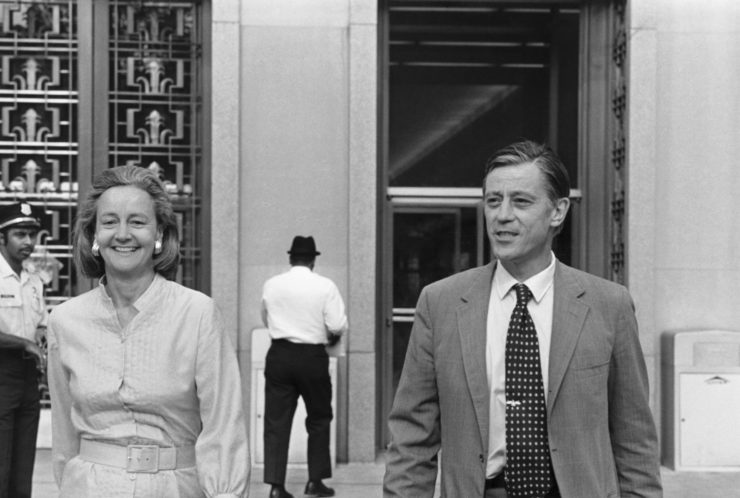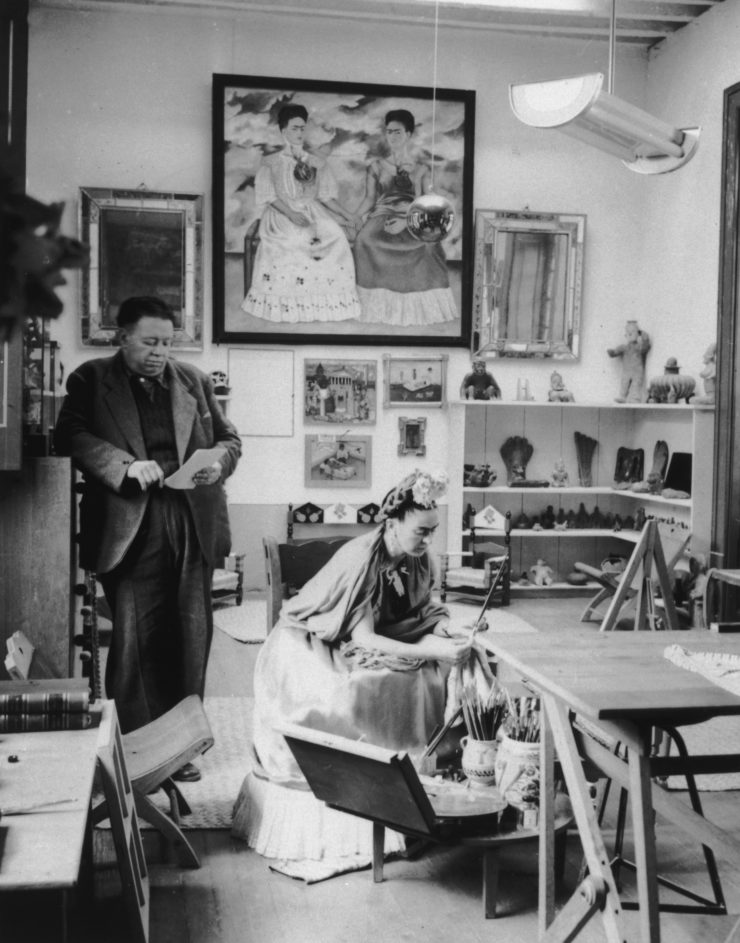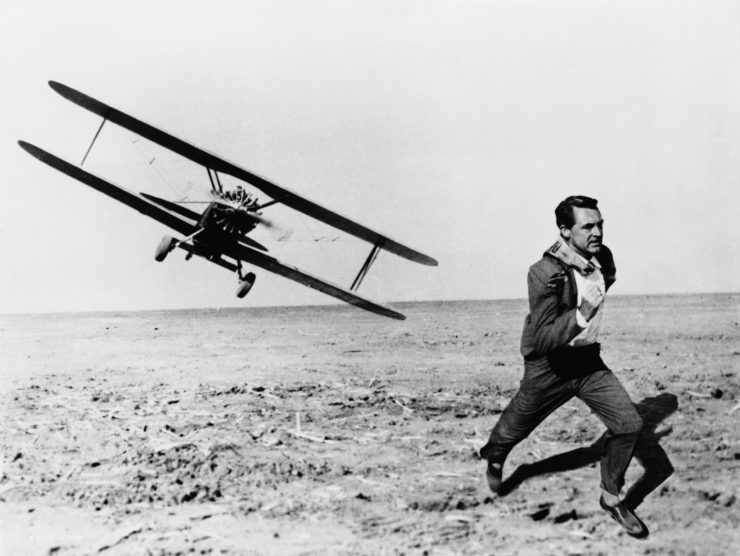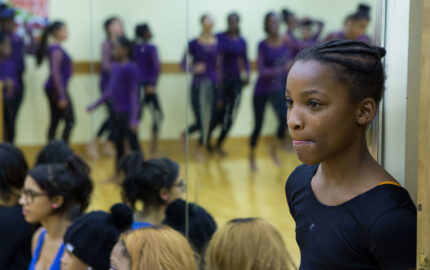How many journalists regard the Watergate scandal as a love story? Peter Landesman does and that is, arguably, the key to his success as a screenwriter.
Landesman was sitting in a Chicago bar when he heard on the television news that Mark Felt, second-in-command at the FBI in the 1970s, had just outed himself in the July 2005 issue of Vanity Fair as Watergate’s Deep Throat. Landesman remembers turning to the guy next to him and saying, “Who the f… is Mark Felt?” He resolved to make a movie about this Washington bureaucrat who changed the course of a nation: “I knew immediately it was a great story, someone that anonymous doing something that brings down the presidency.”
But he also knew he had to step away from the well-trodden ground of “All the President’s Men.’’ He needed to find the emotional heart of the story, and he found it in Felt’s relationship with his wife.
Turning real-life events into screenplays requires an understanding of a simple truth: Film focuses on the “intimate world,’’ as opposed to the “public world’’ of journalism
The 2017 movie “Mark Felt: The Man Who Brought Down the White House” centers on the connection between Felt’s public actions and his relationship with his emotionally troubled wife. The film shows how Felt’s toxic home life and his anger at being passed over to be director of the FBI fueled an urgent need to bring down a corrupt presidency. “Journalism is about information,” says Landesman, who was a New York Times Magazine contributing writer before turning to screenwriting and directing. “Movies are about an emotional tether to the audience.”
Turning real-life events into screenplays requires an understanding of a simple truth: Film focuses on the “intimate world,’’ as opposed to the “public world’’ of journalism, in the words of Mark Harris, a distinguished professor in the University of Southern California’s School of Cinematic Arts.
With a number of this year’s Oscar nominees and other critically acclaimed films based on real events, journalists may dream of transforming their work into feature films. But even those who have succeeded in Hollywood say writers steeped in the art of reporting must be ready to make adjustments—in everything from their conception of narrative to their understanding of the difference between nonfiction and cinematic truth.
Michael Maren, a foreign correspondent turned screenwriter, believes journalism is the perfect training ground for film, and cites some big names to prove it, from the late romantic comedy writer Nora Ephron to Mark Boal, who wrote “The Hurt Locker.” Citing essayist David Shields, Maren calls the film industry’s search for the next big true story “reality hunger.” Shields’ 2010 book by that name was a manifesto arguing for an artistic movement that obliterates the boundaries between fiction and nonfiction. He argues that they are artificial in a world where fiction has become mundane and reality is more shocking.
Intellectual arguments aside, the screenwriter’s prerogative to focus on a narrow slice of truth, of course, can spark a real-world backlash. Steven Spielberg’s movie “The Post” chronicles the two weeks leading up to The Washington Post’s 1971 publication of the Pentagon Papers, the secret documents that revealed how the government lied about the Vietnam War. But the narrative, written by first-time screenwriter Liz Hannah and “Spotlight” writer Josh Singer, revolves around the professional blossoming of Post publisher Katharine Graham, played by Meryl Streep. Although the movie focuses on The Washington Post, it was The New York Times that broke the Pentagon Papers story and won the Pulitzer Prize for Public Service.

Borrowing a term from comedian Stephen Colbert, Landesman calls this artistic license “truthiness.” It’s unacceptable in journalism, but it can make a powerful movie.
Journalistic skills can both help and hinder the screenwriter. Both crafts require an understanding of the essence of a story, an ear for dialogue, and an ability to listen. But journalism’s reverence for information, context, and comprehensiveness can hamper the fast-paced plot needed to make a screenplay work. Exposition is a challenge, says Harris, an Academy-Award winning documentary filmmaker. Too much backstory slows the pace of a film and too little sows confusion. “Film is a medium that you experience in continuous time,” he says. “If you miss something, or if you’re confused, it gets in the way of experiencing the film.”
Letting action tell the story also can be difficult for a journalist: “People reveal themselves in action more compellingly than they do in dialogue.” Context and background that would take up paragraph after paragraph in a magazine piece might be condensed into a film montage. Real-life characters may be melded into a composite, and fictional scenes may be added to heighten the drama.
Two 2016 productions about football star and murder defendant O.J. Simpson highlight some of the differences between a journalistic and a fictional rendering based on the same real-life events. In the journalistic rendering, the documentary, “O.J.: Made in America,” the infamous car chase down Los Angeles freeways is shown as it happened, with aerial footage from news reports. In the fictional series “The People v. O.J. Simpson: American Crime Story,” writers take viewers inside the white Bronco and construct dialogue between Simpson and his friend Al Cowlings, who was driving the car. Although some of that dialogue was based on police recordings, some of it was made up. Harrris calls this "the license to imagine things.”
Unlike a piece of journalism, which is usually static once it has been edited, a screenplay is a living document. Even if a producer loves a screenplay on paper, once shooting begins, a director will make changes on the fly, and then an editor will make more changes in the editing room. “It’s commonly said that a screenplay is written three times: the original shooting script is rewritten when you shoot and then again when you edit it,” Harris says.
Journalistic skills can both help and hinder the screenwriter
Margot Lee Shetterly, author of the nonfiction bestseller, “Hidden Figures,” discovered the difference between writing movies and books when she became a story consultant for the hit film. In 2014, the first-time author landed both a book and a movie deal based on her 55-page proposal about the African-American women mathematicians who helped launched NASA’s space program. Producer Donna Gigliotti spotted the proposal’s potential and shepherded the film to Hollywood success. She hired Allison Schroeder to write the screenplay while Shetterly finished her book. The women had a good working relationship, but Shetterly says it was still difficult to accept the paring down of the real story for the movie. The book, which covers 1943 to 1969, is a deeply researched look at the lives and work of the African-American women employed as human “computers” at NASA. The movie focuses on a dramatic 18-month period beginning in 1961 that culminates in astronaut John Glenn’s launch into space.
“The book and the movie are apples and oranges,” says Shetterly. “When you’re writing nonfiction and you’re immersed in the facts, the documents, the oral history, you have to fall in love with what you’re doing. At first, it was very hard, the decision that the producer and the screenwriter made to cut it to that one period. But in retrospect, it was a critically brilliant decision.”
Schroeder, who with co-writer Theodore Melfi was nominated for an Academy Award for best adapted screenplay, wrote the first draft in three months, before Shetterly finished the book. Schroeder, whose grandparents worked for NASA, felt she had to earn Shetterly’s trust. Once the relationship was established, Shetterly shared source material with her and answered her detailed questions to help give Schroeder’s writing authenticity.
Still, many of the most powerful movie scenes were fictionalized. For example, the NASA official played by Kevin Costner takes a dramatic stand against segregation. He discovers that the mathematician Katherine Johnson, played by Taraji P. Henson, has been forced to walk far across NASA’s Langley Research Center campus to use a restroom for black employees. Horrified, Costner arrives with a crowbar and knocks down the “colored’’ sign in front of the bathroom door. In reality, the scene never happened and a dry memo from an official put an end to the “colored” bathrooms. In fact, Costner’s character is a composite of many mid-level managers.
“I think he was meant to represent pragmatic distracted people, who when presented with a human face, were able to open their eyes and to take action,” Shetterly says. “When their mission was imperiled, they said we don’t have time for racism.”

In another scene, Mary Jackson, played by Janelle Monáe, manages to convince a judge to let her take night classes at a white school so she could become a NASA engineer. Jackson walks into her first class to find she’s the only woman, as well as the only African-American. The teacher tells her the curriculum isn’t designed for her. This moment didn’t appear in Shetterly’s book. The screenwriter drew it from her own life. The Stanford graduate had just walked into an international economics tutorial while studying abroad as a graduate student when the professor told her, “I don’t know how to teach a woman.”
In an effort to be true to the book, Schroeder submitted a first draft that started in the late 1950s. A rewrite focused on the drama of the early 1960s because it had a natural three-act structure around the Space Race: the Russians are beating the U.S.; NASA vows to catch up; John Glenn becomes the first American to orbit the earth. But the hard-won respect and acceptance of the three African-American main characters drove the emotional arc. Gigliotti says she knew she had a winner when “people started weeping while reading the last 30 pages of the script.”
Almost every screenplay follows the three-act structure. It dates to the 4th century B.C. when Aristotle’s Poetics described the dramatic arc: a beginning that sets up the plot, a middle when the plot reaches its climax, and an end, when the plot is resolved. In his classic book “Screenplay: The Foundations of Screenwriting,’’ Syd Field updated the concept for film, calling it the set-up, the confrontation, and the resolution.
“I learned that most of the scripts that read well—meaning they featured lovely sentences, stylish and literate prose and beautiful dialogue – usually didn’t work,” wrote the late screenwriting guru. “While they might read like liquid honey flowing across the page, the overall feeling was that of reading a short story or a strong journalistic piece in a magazine like Vanity Fair or Esquire. But that’s not what makes a good screenplay.”
Unlike a piece of journalism, which is usually static once it has been edited, a screenplay is a living document
In Field’s format, two plot points or turning points connect the acts. The first turning point connects Act I to Act II; the second connects Act II to Act III. The building blocks of the three acts are individual scenes. A typical screenplay might contain 200 scenes in 100 to 120 pages. Each page is considered a minute of filming, and those minutes are important because they are directly tied to cost and the project’s bottom line. Dialogue carries the scenes forward and, these days, it’s often fast-moving—no more than four lines per character. The days of the talking heads are gone. Action and setting are written out in detail, and background information is inferred—all while crisply advancing the plot.
The written version of the famous crop duster scene in Alfred Hitchcock’s “North by Northwest’’ shows the art of describing a visual medium in words. In the scene, a low-flying plane chases Cary Grant’s character, Roger Thornhill, across a wide field. In most of the scene, Grant is alone and has no dialogue. Yet, screenwriter Ernest Lehman described every moment of the 9 minute and 45-second scene. It begins this way: “Thornhill is alone again. Almost immediately he HEARS the PLANE ENGINE BEING GUNNED TO A HIGHER SPEED. He glances off sharply, sees the plane veering off its parallel course and heading towards him. He stands there wide-eyed, rooted to the spot.”
This attention to cinematic detail is crucial. When adapting a book to a movie, Emerson College screenwriting professor Diane Lake first marks every scene in the book that feels visual. Lake wrote the screenplay for “Frida,” the 2002 biographical film about Mexican painter Frida Kahlo, based on a biography written by art historian Hayden Herrera. Her book was her “bible,” Lake says, as she tried to create a simple, human story about someone who had become an outsized folk hero. Kahlo’s life had almost too much drama for one movie. She was crippled by polio, almost died in a bus accident at 18, and endured a tempestuous relationship with her husband, the painter Diego Rivera, who slept with her sister. Lake needed to narrow the story’s focus, and she decided it was, above all, a love story: “It’s Frida and Diego, how they affect each other, how these two explosive personalities connect and grow together.”

Lake is not a journalist, but some of her research resembled reporting. Lake had never been to Mexico, other than a day trip to Tijuana, so the studio agreed to send her down to soak up the atmosphere. She visited Kahlo’s homes and schools so she could better imagine her life.
Screenwriters, like biographers, must find what Landesman calls “an emotional portal” into the main character. “What makes this person tick?’’ he says. “Once I identify that, everything I do as a screenwriter or a director, I do through the prism of that portal.”
For his 2015 “Concussion,” Landesman wanted to make a film about widespread brain injuries in National Football League players. A 2009 GQ magazine article, “Game Brain” by Jeanne Marie Laskas, inspired him. But he didn’t want to make a documentary so he needed to find a dramatic center for the film. He focused on the Nigerian doctor who in 2005 discovered chronic traumatic encephalopathy (CTE), a progressive degenerative disease, in an American football player. Actor Will Smith plays Dr. Bennet Omalu, an idiosyncratic outsider who follows the facts and challenges the NFL’s orthodoxy. “It was actually an immigrant story, not just being black in Pittsburgh, but being Nigerian. It both made him vulnerable and inoculated him,” Landesman says. “He was not swayed by the ‘American-ness’ of football, and was able to look at the danger.”
Discussions about the film became public because of hacked Sony Pictures’ emails released on WikiLeaks. “We need to know exactly what we can and can’t do and if this is a ‘true’ story or not,” Amy Pascal, then a Sony co-chairwoman, wrote in a July 2014 email. She urged caution when departing from the facts. Landesman says he agreed to some changes based on lawyers’ recommendations but didn’t compromise the essential truth of the movie—a process familiar to any journalist working on a tough story.
Screenwriting offers a special blend of art and commerce that can be both exhilarating and frustrating for journalists. Maren, the former foreign correspondent, took to screenwriting after freelance reporting assignments started paying less and less. He had spent much of his career chasing stories in war zones such as Somalia, Sudan, and Rwanda. HBO optioned his first book, “The Road to Hell,” an investigation into foreign aid. The network paid him more than $100,000 for another project, which was also never made. He found an agent and sold the options to several more screenplays. At that point, he was fed up. He started producing and directing his own scripts.
Screenwriting offers a special blend of art and commerce that can be both exhilarating and frustrating for journalists
Still, Maren is optimistic about the prospects for journalists in the film industry. Reporters’ experiences can make a screenplay believable. “Whether you're covering the war in Afghanistan or your local school committee election, journalism puts you up close with real people in real situations at times of stress when big things are at stake,” he says. Journalists are used to asking, “What’s the story?” and then shaping messy real-life events into a structure. They are trained to have an ear for dialogue, which is one of the building blocks of a screenplay. And they are used to writing economically, another requirement for a screenplay.
Still, Maren warns that it’s difficult to turn one’s own journalistic writing into a screenplay. “I usually advise people don’t write the script for their own nonfiction,” he says. “You’ve got to basically take the book or story and smash it to bits and reassemble it in a three-act structure for the film.”
Lake, author of “The Screenwriter’s Path,” agrees. A producer may ask a journalist to write a screenplay adaptation—usually while hiring someone else to write the real thing. In fact, even seasoned screenwriters may find that they are just one of a crowd of writers of the final script. When Lake was brought in to work on “Frida,” other writers had already submitted multiple scripts that were rejected. When she asked to look at these earlier drafts to avoid their mistakes, she was told to find her own vision. She did, and her screenplay won out. But the credits include the names of people who wrote earlier versions as well. “It’s just a different kind of art, because of the collaboration and the huge amounts of money,” she says.
For journalists used to the gratification of publication, the screenplay’s circuitous and often mysterious path to fruition may feel frustrating. In fact, often, success may feel far different than a page-one article or magazine cover story.
“Cash the check and enjoy it,” advises Maren, “because the movie will probably never get made.”


